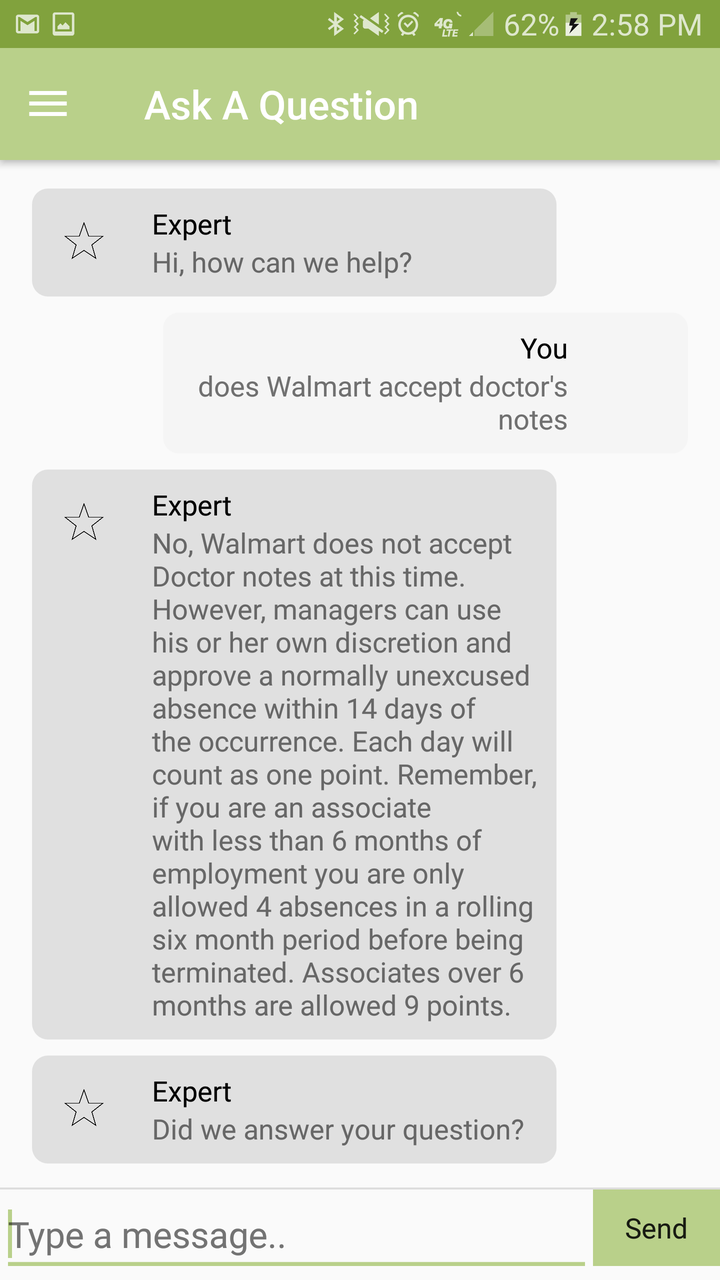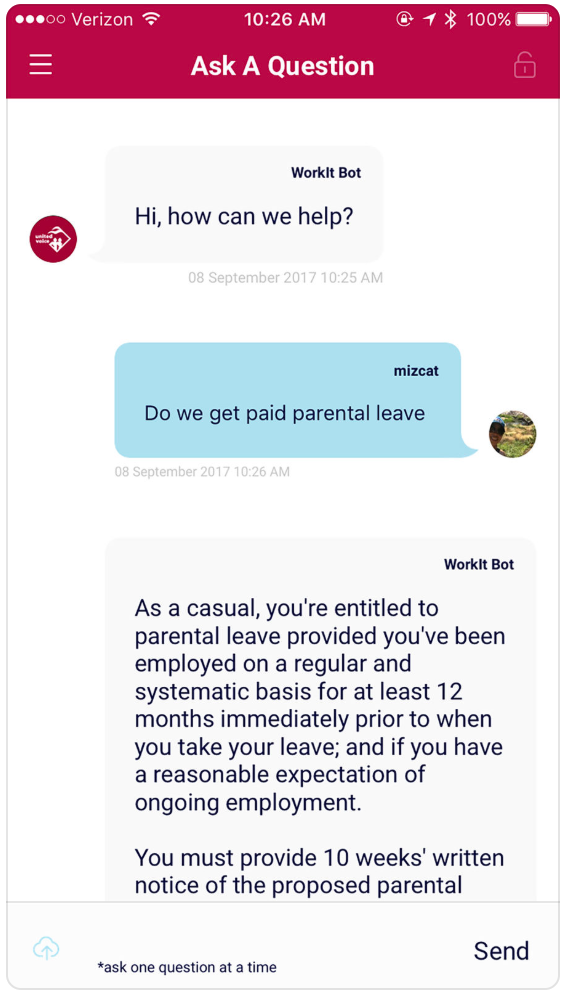Labor Organizers Look To Apps To Reach Wider Audiences
When labor organizer Dan Schlademan told his peers he was launching an activist group of Walmart workers in 2011, some of them asked him if he was looking to retire. They were only half-joking ― Walmart is famous for keeping organized labor at bay, going so far as to shutter departments and stores where unions gained footholds.
But eight years later, OUR Walmart, the flagship project of Organization United for Respect, has claimed a number of victories, including substantially better corporate-wide pay and leave policies.
Key to this success has been the organization’s use of online platforms to foster activism, including a mobile app called WorkIt, Schlademan said. The app uses artificial intelligence to provide answers to Walmart employees about their workplace rights while serving as an organizing tool for OUR Walmart.
Now the group is quietly arming unions, worker centers that serve nonunionized low-wage workers, and other community organizations with a customizable version of WorkIt. The rollout will put the tool in the hands of hundreds of thousands of workers, including retail clerks, health care professionals, domestic workers and teachers, Schlademan said.
Wider deployment of the app, organizers believe, could offer workers a new way to band together for better treatment and help unions ramp up member engagement in the wake of last month’s Supreme Court ruling that’s expected to decimate their ranks.
WorkIt uses a bot powered by IBM’s Watson artificial intelligence technology to provide instant answers to common questions, such as those concerning paid leave, dress code, wage schedules and legal rights.
Trained OUR Walmart staffers and volunteers personally address more specific inquiries, while chat rooms provide space for workers to share stories, exchange advice and collaborate. The OUR Walmart team is continually building out the questions that WorkIt’s bot can recognize and answer.

OUR Walmart
OUR Walmart has used the app to pinpoint the issues that matter most to Walmart employees and to promote campaign events, such as Facebook Live strategizing sessions. It’s served as a recruiting tool for the organization, making it easy to identify and contact workers who are ready to speak out.
Unions and workers at other companies will use a new customizable version of WorkIt for similar purposes.
UFCW 21, an affiliate of the United Food and Commercial Workers that covers grocery, retail and health care workers across Washington state, hopes that the app will free up some of the time and resources that union officials and shop-floor stewards use answering repetitive questions from rank-and-file members, such as when a raise is slated to go into effect, said Tom Geiger, communications director for the union.
“So you can spend more time organizing, so you can spend more time building political power, so you can spend more time training workplace leaders,” Geiger said. “That’s really the intent there behind the efficiency benefit.”
UFCW 21 is beginning to test the app with some grocery store members in the Seattle area and aims to eventually put WorkIt in the hands of all of its 46,000 members, who include employees at Safeway and Macy’s.
A version of WorkIt for the Australian union United Voice, whose 120,000 members include education, hospitality and casino workers, features chat rooms for topics such as “union rights,” “bargaining” and “contract” that promote member education and participation in activities.

OUR Walmart
Schlademan envisions unions using the app to gather examples of workplace problems and to help formulate worker demands before engaging in contract negotiations with employers.
Unions, worker centers and other community organizations could also use the app to demonstrate immediate value when organizing new groups of workers, Schlademan said.
“WorkIt can completely transform the day-one experience of workers joining organizations,” he said.
WorkIt was designed to provide a better alternative to the Facebook groups that OUR Walmart uses to bring together workers. Its goal, he said, is to migrate the more than 100,000 people who belong to these groups to WorkIt.
Facebook’s privacy scandals have shown that such groups are not a “safe long-term place for us to exist,” Schlademan said. Plus, the information workers exchange isn’t always reliable, he added.
WorkIt addresses these shortcomings by providing well-researched answers to questions in a more secure environment, he explained.
If users ask the app’s bot a question, they will receive an accurate and comprehensive answer from a curated set of responses, either from the bot or from an OUR Walmart staffer or volunteer, Schlademan said. And users can search the app anonymously or sign up with a username without sharing their identity.
OUR Walmart’s version of the app probably isn’t immune to misinformation, given that users can also visit chat rooms to discuss issues informally with other workers. Nor is it impregnable to company spies: anyone can sign up.
But to guard against the second risk, labor organizations can program their own version of WorkIt to require users to sign up with unique ID numbers.
A Supreme Court ruling issued in late June makes testing out new tools like WorkIt more urgent than ever for organized labor, said Carmen Rojas, CEO of The Workers Lab, an organization that funds projects designed to build worker power.
In Janus v. AFSCME, the court banned public-sector unions from charging nonmembers for the cost of bargaining their wages and benefits. Many government workers are expected to leave their unions as a result, as they could enjoy the benefits of belonging to a union without having to pay for them.
But while Rojas supports experimentation, The Workers Lab has yet to see any website or app that has been a true game-changer for workers.
There is often still a “divide between ‘click’ and showing up to take direct action or going on strike,” Rojas said. “Our most successful projects have had zero technology tied to them.”
Nonetheless, the recent teacher strikes in places like West Virginia and Oklahoma, which were largely coordinated through Facebook and Twitter and resulted in wage gains for educators there, show that social media can help workers mobilize.
OUR Walmart itself “wouldn’t have been possible” without online platforms, and WorkIt has proven to translate online engagement into successful activism, Schlademan said.
In partnership with Paid Lead for the United States (PL+US), a nonprofit dedicated to winning paid leave for all workers, OUR Walmart used the app to help collect fodder for a report that criticized Walmart’s family leave policy. Schlademan said it also assisted with organizing the delivery of a petition signed by 100,000 associates to Walmart’s headquarters in 2017.
In January, Walmart announced plans to increase its starting wage to $11 an hour and to make changes to its family leave policy that Schlademan said directly address issues the groups raised.
OUR Walmart has persevered in the face of Walmart’s efforts to counter the group, even though OUR Walmart says it isn’t trying to unionize workers. The company reportedly monitored OUR Walmart activists, and an administrative law judge for the National Labor Relations Board found Walmart had illegally fired 16 of them.
Walmart didn’t respond to a request for comment on WorkIt and OUR Walmart.
Using social media to distribute tools that helped workers launch their own local campaigns allowed OUR Walmart to “punch far above its weight class in terms of both paid staffers and actual worker members who were willing to strike,” labor reporter Sarah Jaffe wrote in Necessary Trouble, a book that chronicles new social movements.
Schlademan recognizes that WorkIt won’t solve all the challenges for the labor movement, but he’s confident it will provide some additional firepower.
“It’s a place where we can bring people together around the common need of knowing how to maneuver the current world of working, but then it turns into a space where people can get together and change their current conditions,” he said.
Article/Image(s) Courtesy of Google News
